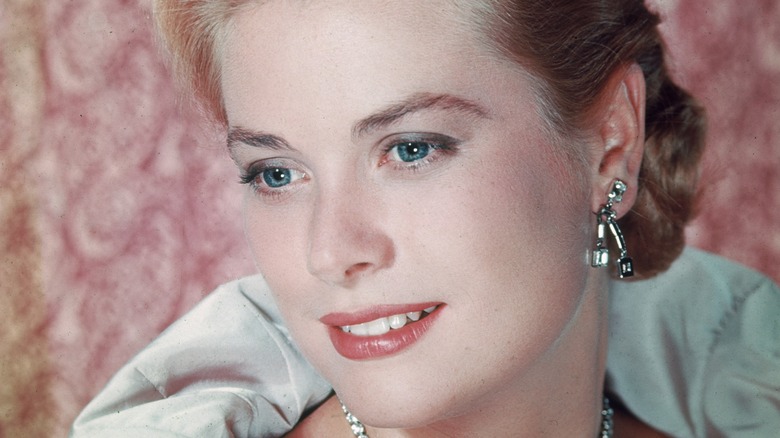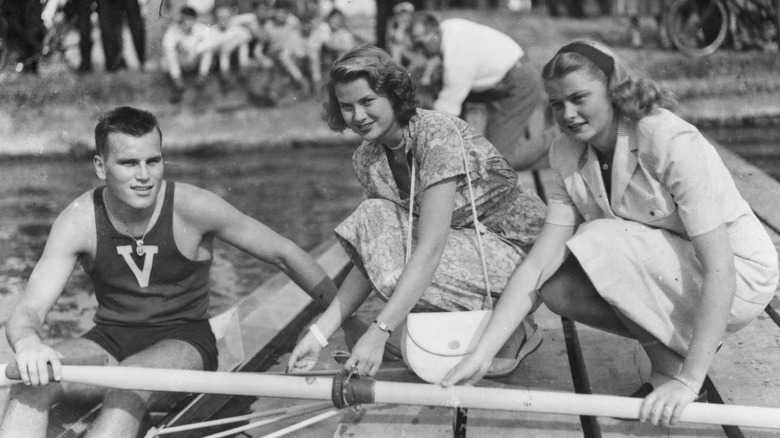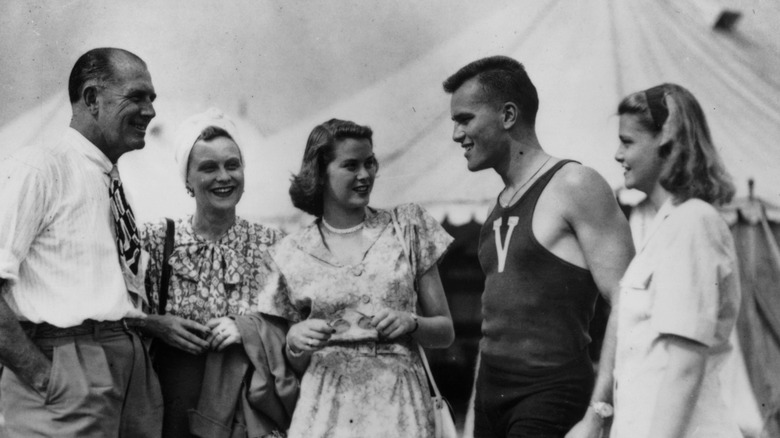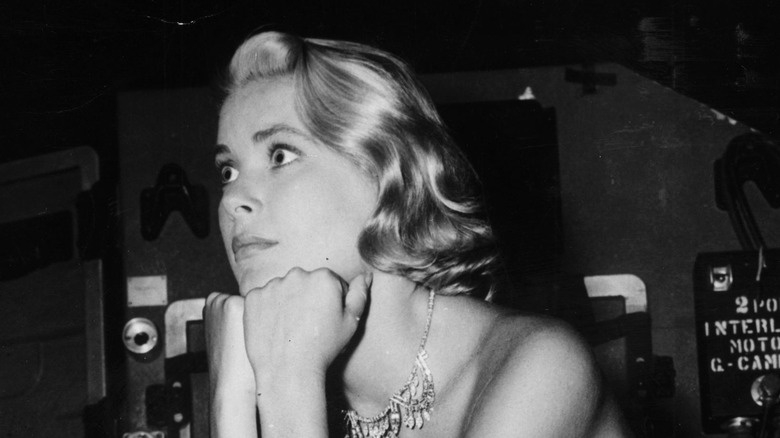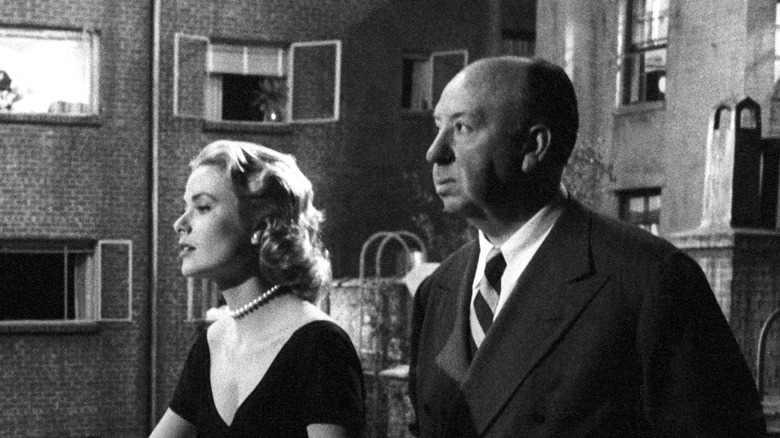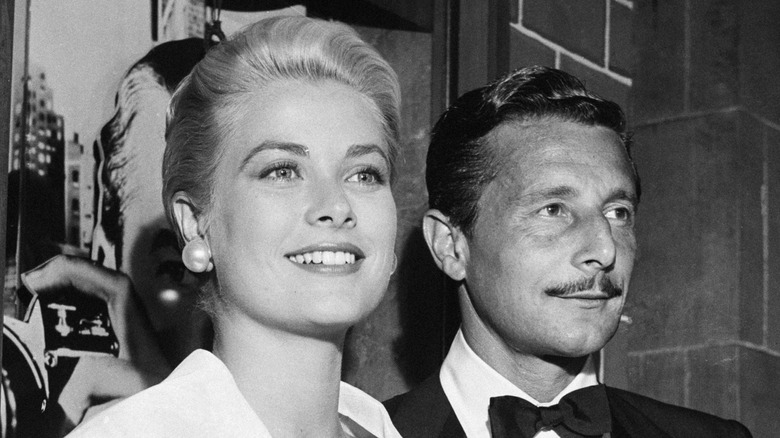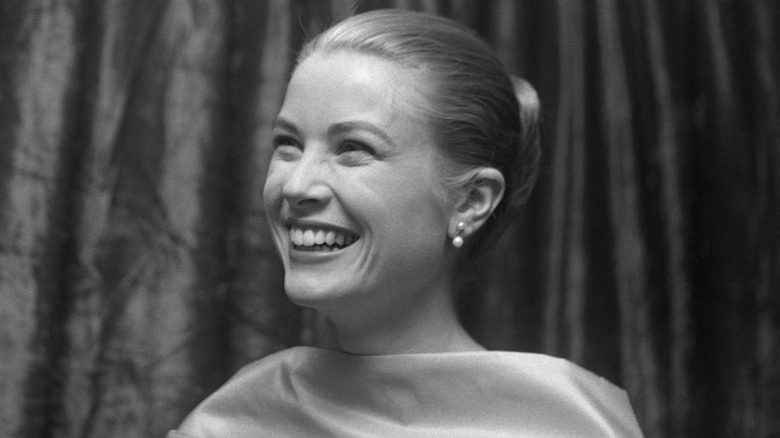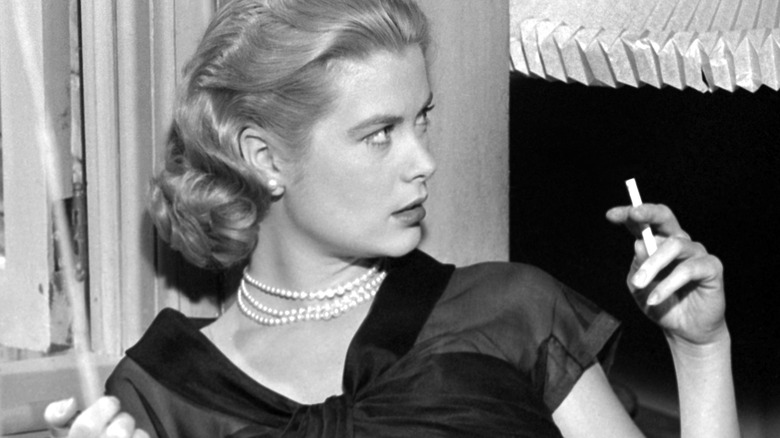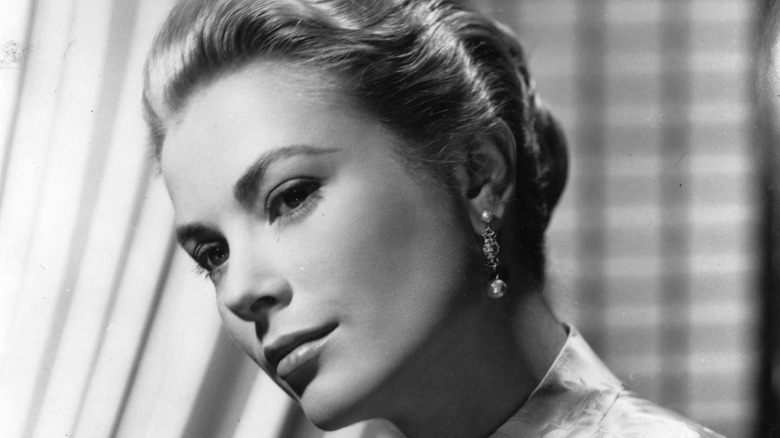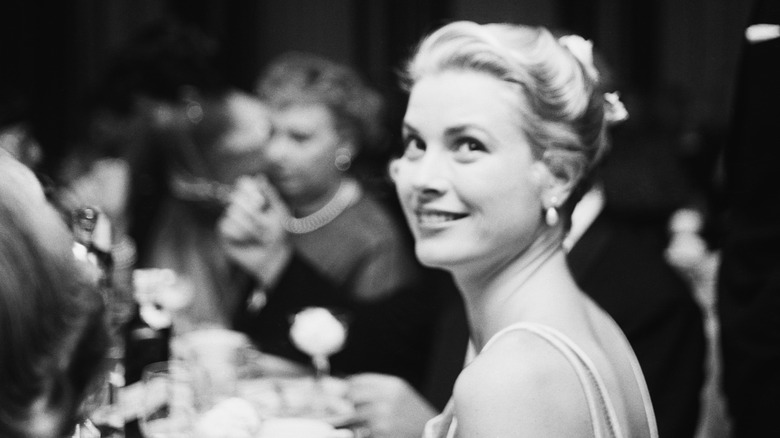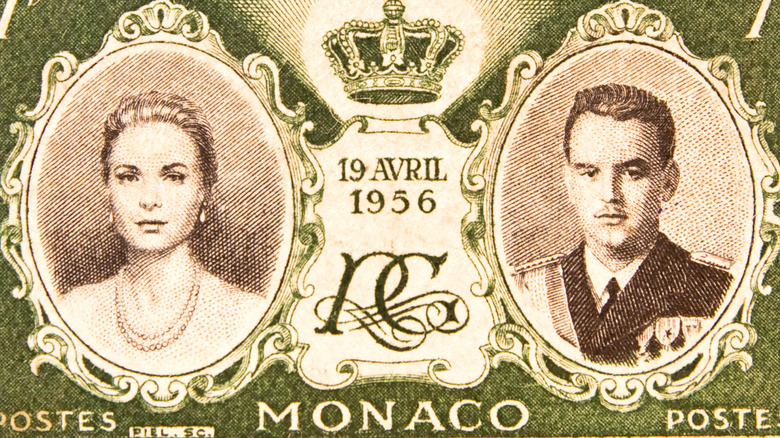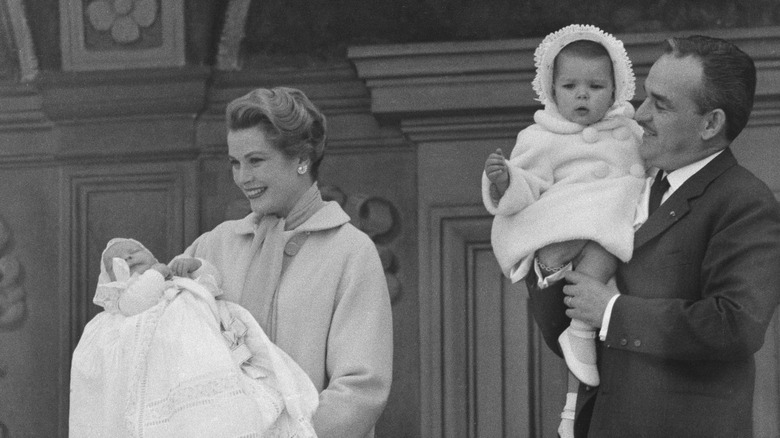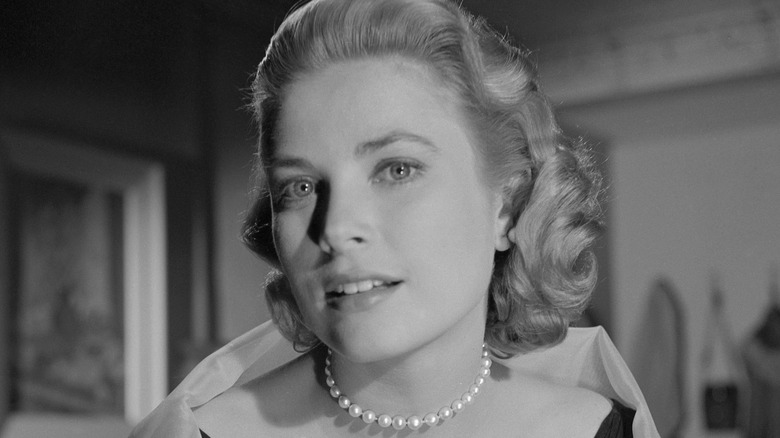What You Never Knew About Grace Kelly
Grace Kelly was a Hollywood icon of the 1950s, when her name became synonymous with elegance, glamor, and style. Her career was only five years long, but in that short time she found critical acclaim and international celebrity. She was already Hollywood royalty, but in 1956 she became literal royalty when she married the Prince of Monaco. Then suddenly she died in a fatal car crash, leaving behind her three children, millions of adoring fans, and a tragic mystery.
Grace Kelly is probably best known for her work with renowned filmmaker Alfred Hitchcock. As described by Vanity Fair, she was in many ways his muse. He depicted her as an aloof beauty whose cold exterior hid a secret and passionate inner life. As quoted by the BBC, Grace Kelly herself never thought that she was particularly interesting. The world disagreed, and she spent the majority of her life surrounded by the press. Her look was emulated by international fashion brands and her love life became the stuff of Hollywood legend. Every aspect of her life, both professional and private, fascinated the public, but she remained a remarkably mysterious figure.
Grace Kelly's name came from a children's poem
Grace Kelly was born in Philadelphia into a successful, wealthy family that, despite its many achievements, struggled to be considered a part of the city's high society. As noted by the BBC, her father Jack Kelly had won three Olympic gold medals and built up a multi-million dollar construction company. Her mother Margaret was a former cover model. Her uncles were stage stars and renowned playwrights. They were also Irish Catholics, and thus they were kept out of the ranks of the Philadelphia elite. The family's third child was born on a Tuesday in 1929. They would name her Grace, after the line in the Mother Goose poem which states, "Tuesday's child is full of grace."
As described by the Washington Post, many families in the United States were in a financial crisis from the Great Depression, but the Kellys were not. They were debt-free, and their funds were in cash. While many lost their jobs and homes, the Kellys lived in luxury. Grace's life wasn't perfect, however.
Her family disapproved of acting
Grace Kelly didn't fit in with her family. Her siblings were social and athletic, whereas Grace was often sick and preferred to stay indoors reading or playing by herself. As described by the Washington Post, she often felt that she was the least-favorite child. Later, her father would remark that he always thought that her sister Peggy would've made a better star, saying, "Anything that Grace could do, Peggy could always do better."
The one thing that Grace truly thrived in was acting. Her family disapproved, and her father is quoted as considering an actress "a slim cut above streetwalker." Despite their objections, Grace moved to New York City to pursue an acting career. There, she paid her own way, appearing in ads for things like beer and cigarettes. While living in New York City, she claimed to be too busy to furnish her apartment. People she brought home found her home devoid of furniture or decoration of any kind, and lit only by candles. One date claimed to have come to see her, only to find her made up to look like she was dead lying under a sheet.
According to the BBC, Grace Kelly claimed to be terrible at her early gigs, but she was able to support herself and even managed to get herself on the cover of Cosmopolitan. She regularly spent money on fortune tellers, seeking reassurance that she was going the right thing and would be successful.
The most important role of her career might be one she didn't get
In 1952, when Grace Kelly was living in New York City, she did a screen test for the film "Taxi." She found out about the screen test at the last minute, and didn't have time to put on makeup, fix her hair, or change her clothes (via The Saturday Evening Post). As described in the New Yorker, the film's director was Gregory Ratoff, and he thought that Grace Kelly would be perfect for the role — ironically, because he didn't think the future beauty icon was pretty, and he didn't think the character should be too pretty. The studio behind the movie, Twentieth Century Fox, wasn't as impressed by Kelly, and she didn't get the role. In the end, it didn't matter. The screen test would set her on the path to stardom.
Studios often exchanged screen tests, and as described in "Grace," it was soon seen by another director — John Ford. He would go on to cast Grace Kelly in "Mogambo." It would also be seen by Alfred Hitchcock. The short film test convinced him that she would be a perfect leading lady.
She was Hitchock's muse
Director Alfred Hitchcock is famous for suspenseful films populated with characters with secrets. The female leads of his films are often cold, mysterious figures who suddenly reveal another side to their personality — one full of violence, lust, or passion.
As described in "Grace," Hitchcock was immediately taken with Grace Kelly. The director had seen her in "High Noon" (a performance he described as mousy) and in the "Taxi" screen test, but in person he was intrigued by how shy and polite she was, and he believed that he would be able to mold her into his perfect leading lady.
Grace Kelly was 23 when she started working on "Dial M for Murder." In the next two years, she would star in "Rear Window" alongside Jimmy Stewart and "To Catch a Thief" with Cary Grant. Hitchcock would describe Kelly as "a snow-covered volcano" (via BBC) because of her cold and aloof exterior and her unexpected passion — especially in her love life.
Her love life fascinated the public
"All the men fell in love with Grace on 'Dial M,'" Alfred Hitchcock would reminisce, "they were around her in scores."
As quoted in "Grace," the director claimed that the infatuation was not one-sided, and that Grace Kelly had flings with "everyone" on the set of their first film together. Kelly's sister even described their hotel as looking like a funeral home because Grace was sent so many flowers. Her relationships, once she reached the height of her fame, were fascinating to the press and the public. The press was unrelenting in their coverage of her private life. As described in "True Grace," Margaret Kelly revealed to the press (without her daughter's permission) that her daughter had dated many of her famous co-stars, including Gary Cooper, Clark Gable, and Bing Crosby.
There were rumors that her love life was fueled by ambition, but according to her friends, that was never the case, and she was genuinely interested in her partners and went out of her way to avoid those she wasn't interested in, even if they were influential. One of these was billionaire Howard Hughes, who was in a position to help her career. Actress Betsy Drake stated, "Grace to avoid Howard Hughes, she didn't use any makeup and wore glasses. He came to the house ... but he didn't recognize her."
She became a style icon
As a teenager, Grace Kelly selected a pair of elbow-length white gloves for a debutante ball that she would never attend. As described in "Grace," she would wear them to professional interviews and auditions for years — a kind of old-fashioned and sophisticated look that often seemed out of place. Her commitment to classic fashion may have seemed strange to her early collaborators, but her streamlined and sophisticated look would make her an enduring style icon.
Kelly worked with some of the era's greatest designers, including her one-time fiancé, Oleg Cassini, but she was always intimately involved with her fashion. Even in her films, when she was wearing clothes that were not her own, she worked closely with the wardrobe department on her looks. Costume designer Edith Head is quoted by the Victoria and Albert Museum as saying, "I have never worked with anybody who had a more intelligent grasp of what we were doing."
She was regularly underpaid
Growing up, Grace Kelly's family had been wealthy, but once she left home to pursue her dream of being an actress, she had to pay her own tuition and rent. As described by "Grace," she found success in commercials, being paid anywhere from $7.50-$25 an hour (the equivalent of between approximately $150-$525 in 2022). Her modeling career would pay even better, but she was always a shrewd businesswoman and careful with money. In Hollywood, however, she was consistently undervalued by the studios. While Grace Kelly was the leading lady in multiple Hollywood films, won awards, and became an internationally recognizable celebrity, the star wasn't compensated for her work as much as her male co-stars.
As described in a report from Vogue, Grace Kelly was regularly underpaid, when compared with the other stars in the film. For "To Catch a Thief," she was paid $5,000 (approximately the equivalent $55,000 in 2022) while her co-star Cary Grant was paid $18,750 (the equivalent of approximately $206,500).
Her career was only five years long
Grace Kelly's career made her an icon, both in fashion and film. In five years, she made 11 films, including future classics like "High Noon" and "Rear Window." In 1956, Grace Kelly was 27 years old and an international celebrity. She was at the height of her film career. Then, suddenly, it ended.
Her career was cut short by her marriage. As described by Prince Albert of Monaco (quoted in Town and Country) in 1955, Grace Kelly was traveling to the Cannes film festival by train when she was introduced to actress Olivia de Havilland and her husband Pierre Galante. De Havilland suggested that Kelly should meet Prince Rainier of Monaco. After their meeting, the two continued to write to each other in secret. In less than a year, they would be married. The romance between Grace Kelly and the Prince of Monaco was seen by the public as a fairytale — but it would ultimately prevent her from continuing her career as an actress.
She had to pay to become a princess
The romance between American film star Grace Kelly and Prince Rainier was not a coincidence. It had less to do with romance than politics. After World War II, Monaco was struggling to keep its tourism industry afloat and the small country's prince was 32, unmarried, and without an heir. As described by historian Dr. Chandrika Kaul (quoted via People) "the idea that [Prince Rainier] might lose his principality if he doesn't marry well and produce a male heir is uppermost in his mind."
Prince Rainier's advisors suggested that the best way to make Monaco a popular destination again was for the Prince to marry an American star. Their first choice was Marilyn Monroe — but she was determined to be too provocative. Grace Kelly had the sophisticated image and the star power they were looking for. As explained by Vogue, she also had the money. In order for Kelly to become the princess of Monaco, they required that she pay a dowry of $2 million (the modern equivalent of approximately $20 million). Grace Kelly had to go to her father, Jack Kelly, for assistance in paying for the dowry. As noted by "Grace," he initially was reluctant, but eventually relented. The wedding would go ahead.
She had the Carnival of the Century
In 1956, less than a year after Grace Kelly and Prince Rainier of Monaco met, the two were married. One of Hollywood's biggest stars becoming an actual princess was predictably a media frenzy. As recounted by Vanity Fair, their marriage ceremony was often called, "The Wedding of the Century." Kelly herself preferred to call it "the Carnival of the Century."
Kelly's wedding dress, which is now owned by the Philadelphia Museum of Art, was designed by costume designer Helen Rose and constructed by 30 seamstresses over the course of six weeks. It was paid for by MGM. The wedding was so opulent that, as noted by Life, it attracted the attention of thieves. Almost $60,000 (the equivalent of over $600,000 in 2022) worth of jewels were stolen during the wedding.
"The Wedding of the Century" might sound like a fanciful turn of phrase, but there genuinely had never been a celebrity event covered so extensively by the media before. The wedding was filmed by MGM studios and broadcast to tens of millions of excited fans around the world. There were more than 2,000 reporters at the actual wedding, which led one of Kelly's bridesmaids to remark that there was more press there than actual wedding guests. As noted by Town and Country, the 600 wedding guests alone would've been enough to attract the attention of the press, including many of the era's biggest stars, like Cary Grant and Ava Gardner.
Her new life was too small for her
Grace Kelly had become famous in just five years, and she had planned to continue as an actress. Her new husband had other ideas.
Monaco is physically very small. As noted by Vanity Fair, the entire country is less than half of the size of Manhattan's Central Park. Life as a princess was strict and regimented, and there were many expectations for how she would live her life. Although the Prince of Monaco had specifically set out to marry an American film star, he didn't want his wife to be those things. As noted by Biography, he insisted that Kelly give up her American citizenship and her acting career. Grace Kelly being a celebrity had brought the attention to Monaco that Prince Rainier and his family had wanted, but now that she was the princess, it was considered inappropriate for her to act. Showing any of the films she had starred in was also banned in Monaco.
In 1962, her longtime collaborator Alfred Hitchcock attempted to lure her back to film with the script for the film "Marnie." As noted in "Grace," Kelly was initially very excited about the prospect of "Marnie," but the media flurry around the idea of her return to acting paired with the extremely negative response from the people of Monaco forced her to pull out. She wrote to HItchcock saying, "It was heartbreaking for me to have to leave the picture ... I was so excited about doing it."
She died because of a stroke
In 1982, when Grace Kelly was only 52, she was driving with her daughter along a mountain road when her vehicle crashed through a retaining wall and fell over the edge of the cliff. As described in "Grace," she was rushed to a nearby hospital, where they determined that one of her pupils was unresponsive to light — a sign of a brain injury. Later tests would show that she had suffered a stroke behind the wheel. Her doctor believed the stroke was minor, and if she had been in a safe location when it occurred she would most likely have been fine. Her injuries from the crash were fatal.
Although the Kelly family had a history of strokes and those close to Grace stated that she had been experiencing headaches for months, some found it difficult to believe that a stroke really was the cause of her tragic death. As noted by Biography, rumors circulated that Kelly's daughter Stephanie (who suffered several broken bones but survived the crash) had secretly been the driver at the time of the accident, despite not having a license, or the car's brakes had failed, or even that the mafia had been involved. Something as simple as a car crash couldn't satisfy her devastated fans.
"There was so much magic that surrounded Mom," Stephanie told the Chicago Tribune. "It was difficult for people to accept that she could do something so human as to have a car accident."
